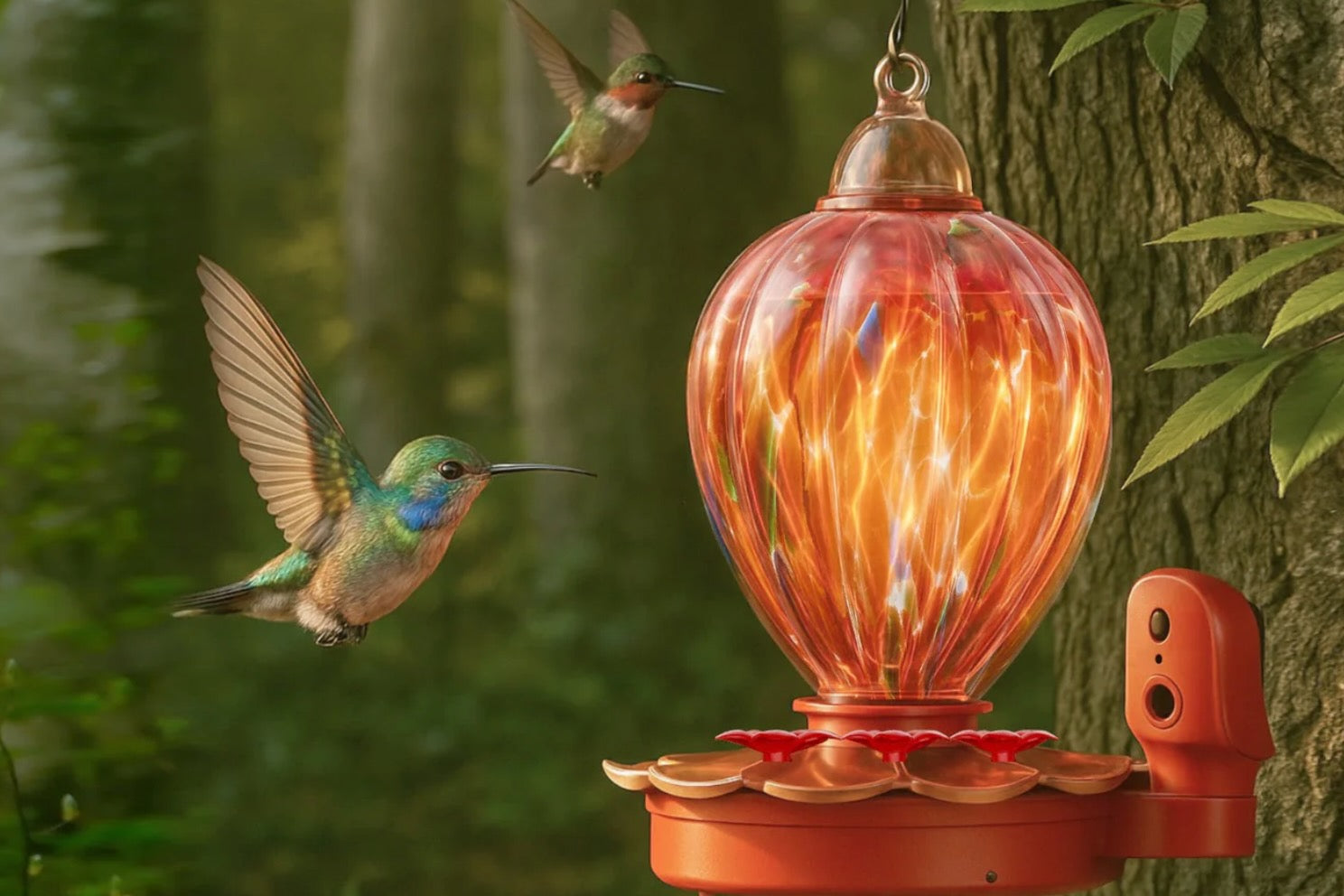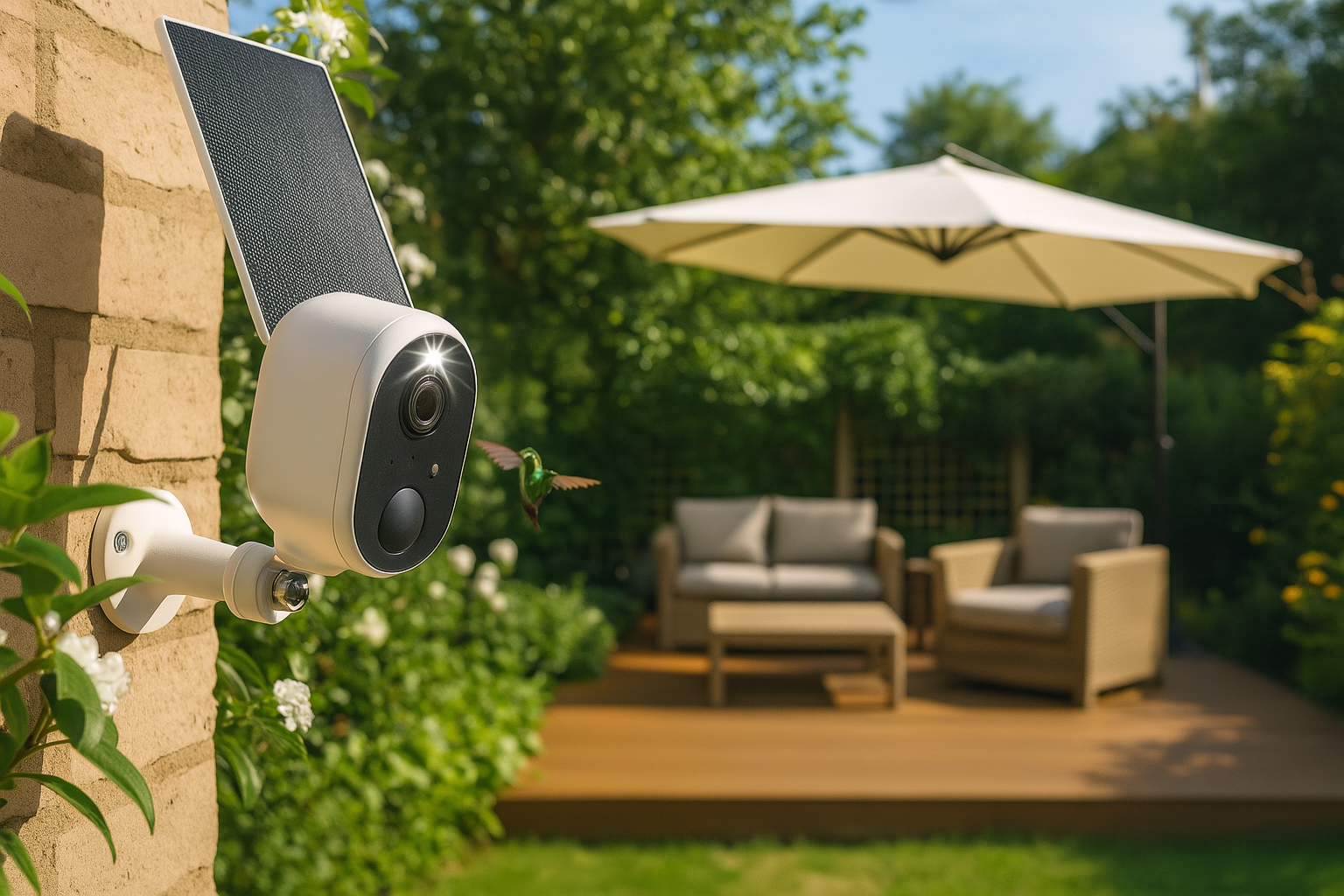Hummingbirds are incredible backyard visitors—tiny, fast, and dazzling. If you're welcoming them with a feeder, the most important thing you can do is make sure you're filling it with a safe and effective nectar solution.
There’s a lot of information (and misinformation) floating around online about hummingbird food, so in this post, we’ll keep it simple, science-backed, and practical. Here’s exactly what to put in your hummingbird feeder—and just as importantly, what not to.
The Best Nectar Recipe
The gold standard for hummingbird nectar is simple:
1 part plain white sugar to 4 parts water
That means:
● cup sugar + 1 cup water Or cup sugar + 4 cups water if you're making a larger batch
This 1:4 ratio closely mimics the sugar concentration of natural flower nectar, which generally ranges from 20% to 25% sucrose depending on the plant species. It's the sweet spot that provides the energy hummingbirds need to power their incredibly fast metabolism—one of the highest of any vertebrate on earth.

How to Make It
You don’t need to buy premade nectar or any special mixes. Here’s how to make homemade nectar the right way:
1. Heat the water — Just enough to dissolve the sugar easily. Some people boil the full amount, but a faster method is to mix half boiling water from a kettle with half cold tap water.
2. Stir in the sugar — Whisk until it fully dissolves.
3. Cool to room temperature — If needed, before pouring it into your feeder.
4. Refrigerate leftovers — You can store extra nectar in the fridge for up to a week.
No additives, no red dye, no honey, no molasses. Just sugar and water.
What Type of Sugar to Use?
Only use plain white refined sugar. This is critical.
According to the Smithsonian Migratory Bird Center and the Cornell Lab of Ornithology, brown sugar, honey, turbinado, molasses, or artificial sweeteners can all be dangerous to hummingbirds. These alternatives contain iron, unrefined minerals, or organic compounds that can promote bacterial and fungal growth, or lead to iron overload, a serious and often fatal condition for birds.
- Yes: Granulated white table sugar (pure sucrose)
- No: Brown sugar, raw sugar, turbinado, honey, molasses, maple syrup, or artificial sweeteners
Even organic or "natural" alternatives are risky—what’s good for human digestion may be harmful to hummingbirds’ delicate systems.

Skip the Red Dye
Many commercial nectar products come with red coloring. Don’t be fooled.
Hummingbirds don’t need red dye to find your feeder—most feeders, like Cabay's smart hummingbird feeder, already include red parts that attract them visually. More importantly, red dye #40 (Allura Red), commonly used in food coloring, has been shown to accumulate in organs and possibly disrupt metabolism in animals. While direct studies in hummingbirds are limited, conservation organizations including Audubon, the American Bird Conservancy, and the National Wildlife Federation all strongly advise against using red dye in feeders.
Natural nectar is clear. Your nectar should be, too.
How Often Should You Change the Nectar?
Freshness is essential.
- In mild weather change the nectar and clean the feeder at least every 3 days.
- In hot weather change it every 1 to 2 days especially if your feeder is in direct sun.
- Wash the feeder thoroughly each time to prevent mold or bacteria build-up.
A 2021 study published in Journal of Wildlife Diseases found that mold-contaminated feeders can cause fatal infections in hummingbirds, especially aspergillosis, a respiratory fungal disease. Clean, fresh nectar isn’t just about preference—it’s about safety.
Tip: If you find that your feeders are going mostly untouched, try making smaller batches so you’re not wasting nectar.

Can I Adjust the Ratio in Hot Weather?
Some birders and local guides recommend slightly diluting the sugar solution (e.g., 1:5 or even 1:6) during extreme heat, when water needs may outweigh energy needs.
While the 1:4 ratio is the widely accepted standard, this minor seasonal adjustment may help hummingbirds stay hydrated—especially if you observe them lingering more than feeding. There is no hard scientific consensus on this, but anecdotal evidence from birding communities suggests it may be helpful in short-term heat events.
Bonus: A Smart Feeder That Helps You Do All This Better
If you're looking to simplify your hummingbird care while getting a closer look at the action, check out the Cabay Smart Hummingbird Feeder.
This solar-powered red glass feeder includes a AI-powered bird recognition, and a 148° wide-angle view so you never miss a moment. It even alerts you when birds arrive, it’s one of the smartest ways to bring nature closer to home.
At Cabay, we believe in “Where AI Meets Nature”. Our feeders are designed to enhance your connection with the wild while making backyard care simpler, smarter, and more joyful.
Want to learn more? Explore our growing collection of hummingbird tips, nectar guides, and smart backyard advice on cabay.com.
Love where your backyard lives—with Cabay.





Leave a comment
This site is protected by hCaptcha and the hCaptcha Privacy Policy and Terms of Service apply.